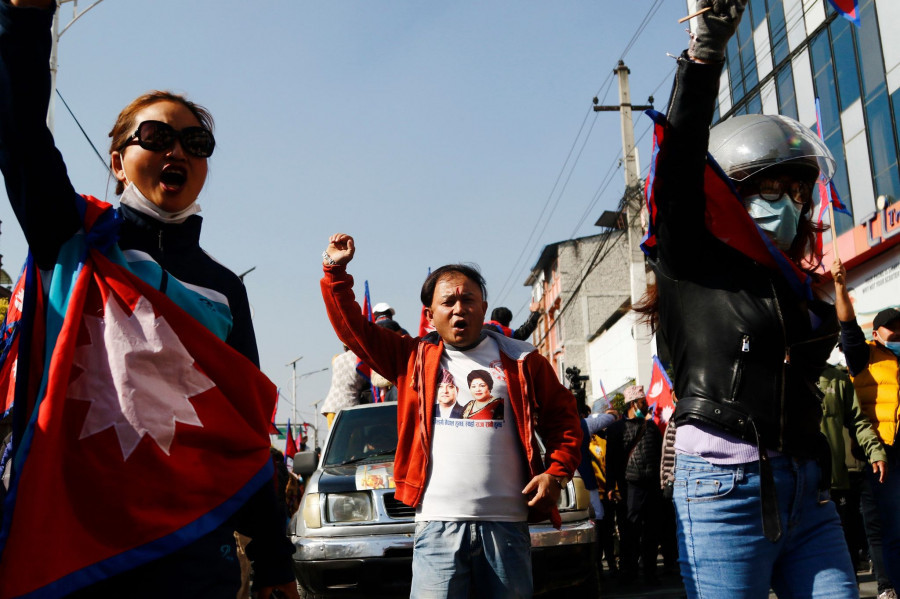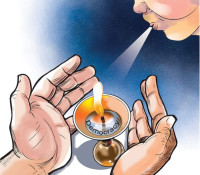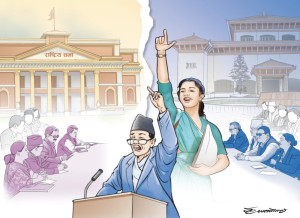Columns
Who gets to write our history?
The nationalist narrative seeks to establish Nepal as a great nation, and conveniently sets aside other histories that defeat this purpose.
Amish Raj Mulmi
Every year, without fail, all Nepalis wake up to the ‘greatness’ of Prithvi Narayan Shah on the occasion of Prithvi Jayanti, now also known as Nepal Ekikaran Diwas, or unification day. This year was no different. One commentator grandly declared ‘if’ Prithvi Narayan Shah hadn’t defeated the evil Captain Kinloch of the East India Company, Nepal would become a British colony, and Tibet and China too might have become British colonies within a decade had the great king not halted the incorrigible Empire’s lusty intentions.
Here, I shall digress a little to talk about the ‘ifs’ of history—a favourite trope among all. It is said that Philip II of Macedon, the father of Alexander, once wrote to Sparta, ‘You are advised to submit without further delay, for if I bring my army into your land, I will destroy your farms, slay your people, and raze your city’. The Spartans replied with a single word: ‘If’. If is a word fraught with connotations, full of seduction, and replete with fallacies. To talk about what would have happened if this or that hadn’t is nothing but pure fiction.
Now, back to the great Shah.
Every time the debate about whether the Gorkha military campaigns initiated by Prithvi Narayan Shah were a conscious effort to ‘unify’ Nepal or an act of imperial colonisation erupts, I return to the academic debate between linguist Kamal P Malla and Nepali historian Mahesh Raj Pant. I do not want to recall the entire debate here (although it is highly recommended for students who like to keep an open mind); it would be sufficient to say that, beyond the personal barbs between the two, the debate centres around the question of historiography. In other words, who gets to write the history of this nation, and whose version is correct?
Consider one of the points of their debate: the venerable Divyopadesh, said to be narrated by Prithvi Narayan Shah on his deathbed. For his modern-day bhakts, the Divyopadesh contains enough wisdom to sustain and rule Nepal till the end of days. But what about the fact that historians consider the earliest manuscript to be dated well after Prithvi Narayan Shah’s death? The manuscript was said to be discovered at the home of courtier Bakhat Man Singh Basnyat in the middle of the 20th century; historians Baburam Acharya and Yogi Naraharinath published it first in 1953; and the latter is said to have dated the manuscript to 1882 BS (1826 CE), when Rajendra Bikram Shah reigned over Nepal. But such historical ambiguity is discarded in favour of the simple narrative currently in favour.
Nationalists believe Prithvi Narayan stood on top of Chandragiri and wished to ‘unify’ all that he saw, bringing the char jaat, chattis barna under a single umbrella that he came to call Nepal. Such a linear history emphasises the birta, bravery, of successive Shah kings and their noblemen in keeping Nepal safe from the depredations of the hungry English. The Ranas deserve scorn for plunging the country into a dark hole, but at least they retained Nepal’s sovereignty. Thus we arrive in the modern age, where Nepal’s unique heritage and culture is unparalleled in the world, while Nepal itself is coveted by the heirs of the British—India. Thus, we have Prithvi Narayan to thank for everything today. This narrative unites forces as disparate as monarchists and communists, and actresses and ‘super-cops’. In this view, national sovereignty lends its citizens pride; as Nepalis, we must feel proud to be born in this great nation.
Such exceptionalism, sadly, is not particular to us. Nation-builders everywhere believe a national mythos is essential to unite a nation. Most times, however, such myths are created after the fact to solve a purpose.
As cultural historian Pratyoush Onta has documented, the National Education Planning Commission was set up in 1954 to make a long-term educational plan for Nepal. ‘Apart from the paucity of material resources, the NEPC discovered a bewildering variety of teaching curricula in the various types of schools…’ But the NEPC was tasked with building a curriculum for a nation ‘at the crossroads of two ancient civilisations’. Accordingly, in its 1955 report under the heading ‘Need for Education in Nepal Today’, it wrote: ‘[O]ur isolation has made us proud and nationalistic, and we wish to remain so… During the last few centuries we have neglected these essential characteristics of all strong states—national pride, virility, individuality—because we have allowed ourselves to go into darkness. Education must restore these values to our country’. A little later, on why Nepali was made the medium of instruction, the report stated, ‘The study of a non-Nepali local tongue [emphasis in original] would mitigate against the effective development of Nepali, for the student would make greater use of it than Nepali—at home and in the community—and thus Nepali would “remain'' a foreign language’.
The making of a national ‘Nepali’ narrative was a conscious decision to turn Nepal into a ‘strong state’. Further, the Nepali language was made universal to bring ‘greater national strength and unity’. Thus, all such histories that eroded or defeated this purpose were conveniently set aside or remoulded to serve this higher purpose. As Onta concludes, ‘[T]he desire to read Nepal’s independence and sovereignty in its past is so strong that Balbhadra’s temporary supremacy over the British becomes the story of Nepali bravery at work. The Gurkhas like Gaje Ghaley have to be erased from public memory so that a non-ambivalent and elegant rashtriya itihaas could emerge’.
Nationalist histories inevitably render inconvenient histories invisible, such as that Balbhadra Kunwar surrendered to the British and went on to serve in Sikh king Ranjit Singh’s army in Lahore. While the history of bir Gurkhas is appropriated in our national myth, the story of the Gurkhas themselves are not. This desperation to be acknowledged as a great nation rooted in the past and shaped by an 18th century dynast’s purported words outweighs all other considerations. The histories of our many people and civilisations matter as much as the history of Gorkha conquest; unfortunately, Nepali ‘pride’ dictates such histories be ignored.




 5.77°C Kathmandu
5.77°C Kathmandu















